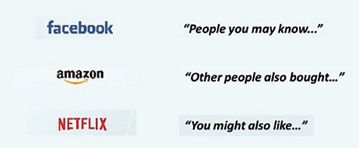- within Intellectual Property topic(s)
- in China
- with readers working within the Media & Information and Law Firm industries
Artificial Intelligence (AI) is a loaded technology buzzword that comes in different forms in various commercial products. Some of the most impressive AI breakthroughs are the result of separate contributions and heavy investments made by both large and small players in the tech world. The rise of AI, and the need to protect these investments, creates an interesting and challenging set of issues for inventors who seek to patent their AI-related technology with the US Patent and Trademark Office (USPTO).
First, we must dispense with the notion that the end product which implements AI is what most industry players are seeking to patent. To put it bluntly, most inventions in AI will not be directed to a magical robot or the self-driving car. Instead, a lot of inventions are directed to the building blocks of AI, such as deep learning and machine learning algorithms along with data collection techniques which are vital to train the AI software.
For instance, consider the just-mentioned self-driving car example. What makes the self-driving car a breakthrough is not necessarily the ability to provide automatic acceleration, braking, or turning of the steering wheel. Rather, it is the field-of-view object recognition performed by the car's visual sensors that need to be human-like in its ability to discern a vast array of objects in the surrounding environment. Such a high-level of object recognition capability will be powered by a deep-learning algorithm that builds a robust artificial neural network for performing image recognition, which in turn requires an immense amount of training data that needs to be collected and labeled.
Therein lies the rub. When the AI innovation is directed to the algorithm or the data collection technique, it risks receiving extra scrutiny by the USPTO. Ever since Alice Corp Pty Ltd v CLS Bank International, 134 S. Ct. 2347 (2014), where the Supreme Court of the US held that claims about a computer-implemented, electronic service for executing financial transactions cover abstract ideas ineligible for patent protection, a dramatic effect has been felt in the patent world on the validity of not only business method patents, but also software-based patents in nearly all fields of technology. Patents directed to mathematical algorithms, methods of data collection and/or analysis, and methods replicating human activity are vulnerable for patent eligibility analysis in the USPTO. Unfortunately, these also happen to be some of the defining characteristics of AI.
Following the seminal case of Alice, in cases where patent eligibility was raised at the district court level or the US Court of Appeals of the Federal Circuit, a lopsided majority of all these cases were found to be non-patent eligible, especially at the Federal Circuit.
For example, two cases from the Federal Circuit which prove especially problematic for AI patent seekers is Electric Power Group, LLC v Alstom SA (2016) and Digitech Image Technologies v Electronics for Imaging (2014). Ironically, the cases themselves did not involve fact patterns specific to AI. However, they include language which, if applied broadly, targets inventions directed to data collection and analysis.
In Electric Power Group, the claims at issue require the reception of real-time data coming in from a wide geographical distribution; analysing the data for instability that may be indicative of grid stress; displaying visualisations of the stability metrics; storing the data; and deriving a composite indicator of power grid reliability. What jumps out in this case is the way the court took issue with an invention directed to gathering, analysing, and displaying data. Notably, the court explained "[h]ere, the claims are clearly focused on the combination of those abstract-idea processes. The advance they purport to make is a process of gathering and analysing information of a specified content, then displaying the results, and not any asserted inventive technology for performing those functions. They are therefore directed to an abstract idea." This statement can be, and has been, seized by examiners at the USPTO to reject claims which contain any form of "gathering and analyzing information of a specified content, then displaying results".
In Digitech, the claims at issue were directed to the generation and use of an "improved device profile" that describes spatial and colour properties of a device within a digital image processing system. Again, the facts of this case itself were not directed to AI, but the decision contains an extremely broad statement as follows: "The method in the '415 patent claims an abstract idea because it describes a process of organizing information through mathematical correlations and is not tied to a specific structure or machine."
To illustrate how broad and encompassing the above statements from Electric Power Group and Digitech are think about the following three main stream innovations, see figure 1.
Figure 1: Examples of recommendation engines used by Facebook, Netflix and Amazon, which are forms of AI

These extremely popular and commercially significant recommendation engines are forms of AI that may broadly fit into the description of "gathering and analysing information of a specified content, then displaying results" or "a process of organizing information through mathematical correlations and is not tied to a specific structure or machine." Given the heavy investment involved in each of these features, which are likely exposed to over 100m users daily, it is difficult to accept that these types of innovations fall into the realm of non-patentable subject matter.
However, the above example represents the disconnect between the language we find in precedential case law and the nature of the current AI revolution. For in-house IP managers and patent law practitioners, it can be tricky and frustrating to thread the needle between getting the broadest claim scope possible in the fertile AI intellectual property landscape, while also avoiding the challenges of avoiding an abstract idea rejection.
For a company working on an AI-related innovation, it is important to determine what piece of the AI puzzle a patentable idea falls into, and to determine the tolerances of adjusting the target claim scope to get around a rejection by the USPTO. For instance, if you are a company that came up with an amazing innovation in data collection that is used to train AI software, but all your commercial activities stop short of feeding that data to the actual AI software, then you will need to fight hard to avoid the call of Electric Power Group to take your data and "apply it" in some unique manner.
The good news is that the pendulum may be swinging in a favourable direction for AI stakeholders. Andrei Iancu, the recently appointed Director of the USPTO, appears to be very warm to the idea of reducing the patent eligibility hurdles related to patenting algorithms. During an oversight hearing for the Senate Committee on the Judiciary held on 18 April, in response to a question from Senator Kamala Harris stemming from a discussion on the patentability of AI algorithms, Director Iancu responded: "There are human-made algorithms, human-made algorithms that are the result of human ingenuity that are not set from time immemorial and that are not absolutes, they depend on human choices. Those are very different from E=mc2 and they are very different from the Pythagorean theorem, for example."
While these are reassuring words to the AI industry, there are definite steps that need to be taken, such as congressional action or the addition of more AI-related art units equipped to understand the nuances of what constitutes patentable subject matter. However, If the USPTO director can guide the examining corp to take a patent owner-friendly approach toward inventive algorithms related to AI, then it will help swing the pendulum of patentable subject matter toward a place that is in harmony with the current state of technology.
Originally published by Intellectual Property Magazine - Dec/Jan issue.
The content of this article is intended to provide a general guide to the subject matter. Specialist advice should be sought about your specific circumstances.
[View Source]

